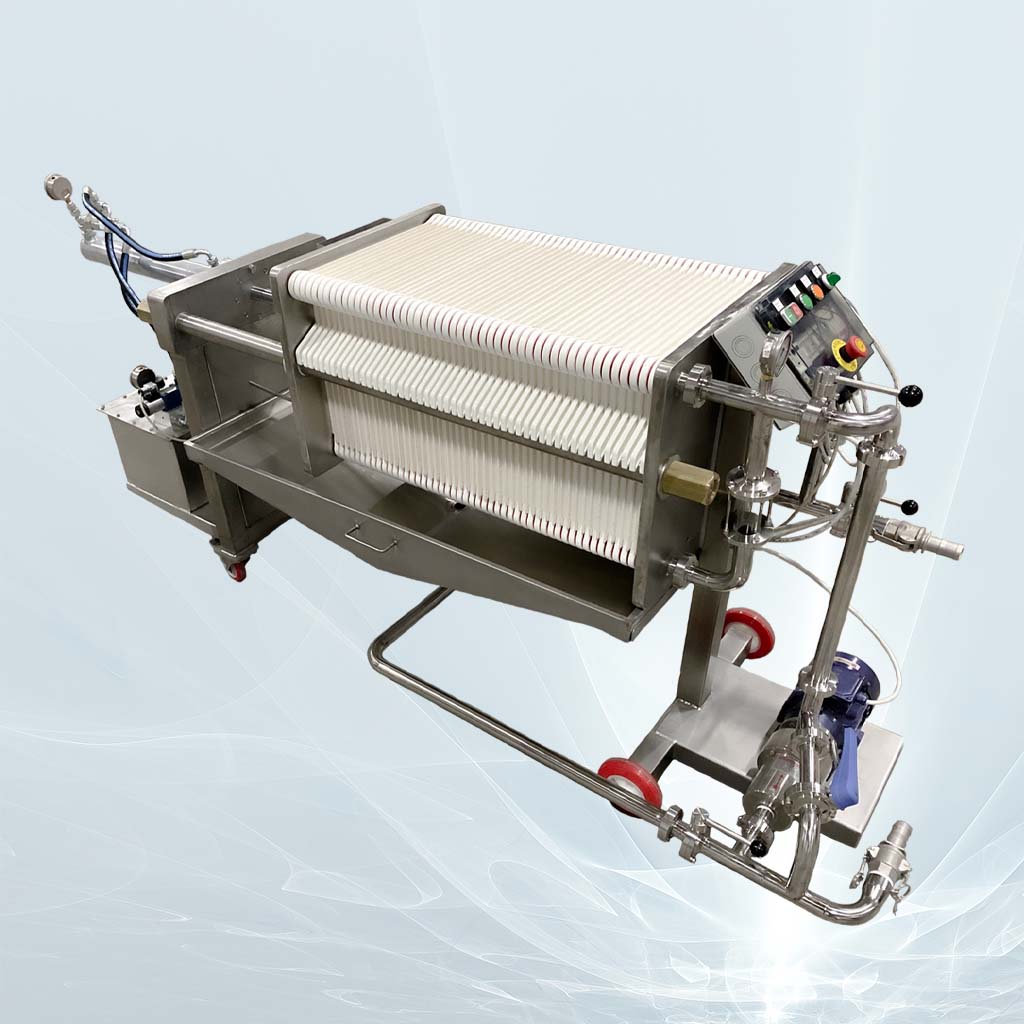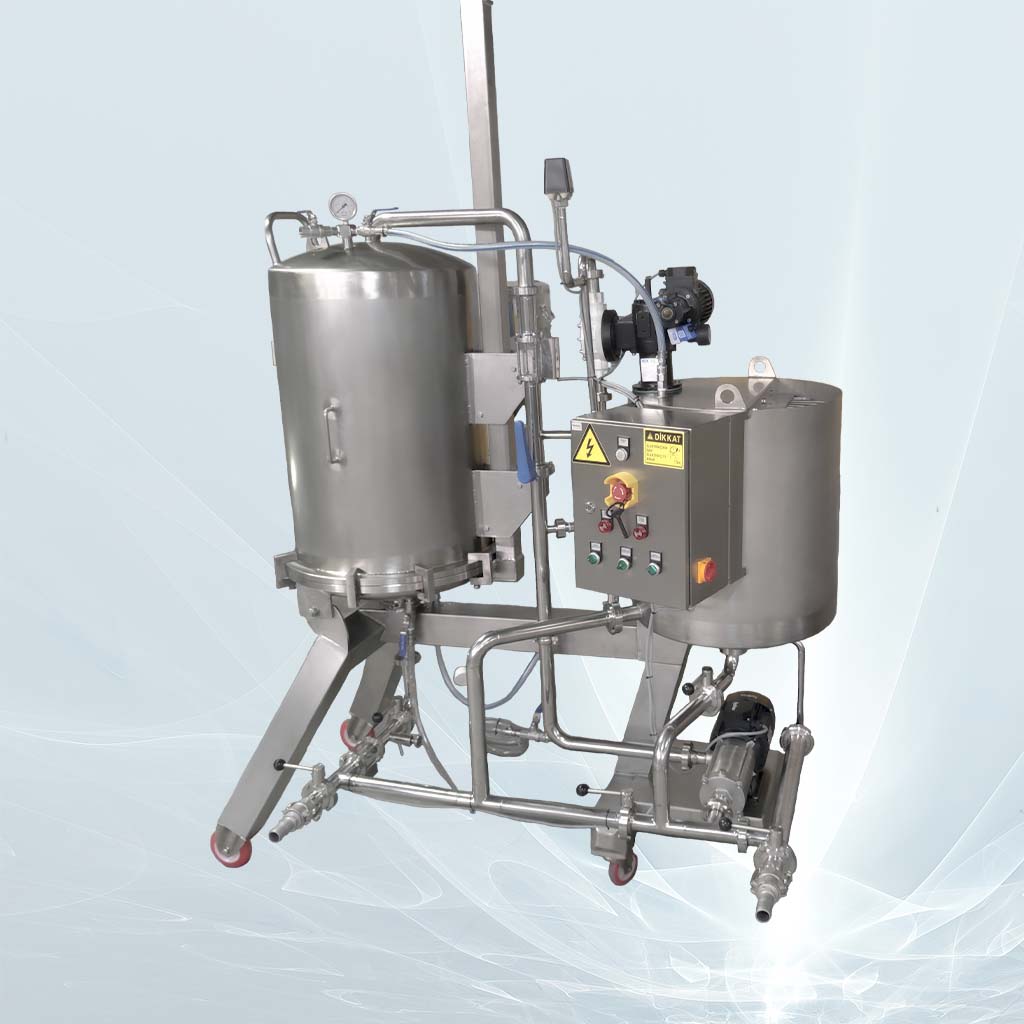
They are designed to filter pulpy food using unique filter papers and filter plates. Plates and all other accessories are hygienic equipment compliant with food conditions.
- Manually Closed Paper Filter (20-100 Plates)
- Hydraulically Closed Paper Filter (20-100 Plates)
- Manually Discharged Kieselguhr Filter (2-20 M²)
- Automatically Discharged Kieselguhr Filter (2-20 M²)
- Bloomer Filter (Bag)
Olive Oil Filter
Olive oil is often filtered during the last step in its production process. The goal is to remove suspended solids and humidity, which give the oil a cloudy appearance that is less appealing to consumers. Suspended solids derived from the olive fruit, such as sugars, proteins, and phospholipids, may encourage hydrolysis and rancidity in the oil at later storage stages (see Trends in Food Science & Technology 21 (2021):201). Thus, their removal by filtration may be desirable since it is known that after twelve months of storage, filtered oil is mainly because of a slower rate of hydrolysis. On the other hand, filtration also affects the oil's color, sensory, and chemical attributes: fruitiness, spice, and bitterness may decrease with filtration. At the same time, rancidity defects may be more pronounced. Filtration may also compromise other positive characteristics of the oil by reducing chemical constituents, such as polyphenols. There are trade-offs in filtering olive oil that affect not only the product’s visual appeal but also the intensity of its sensory attributes and potentially its shelf life. The goal of filtering should be water removal when it is present in large droplets to avoid oil breakdown in storage.

 Türkçe
Türkçe عربى
عربى



